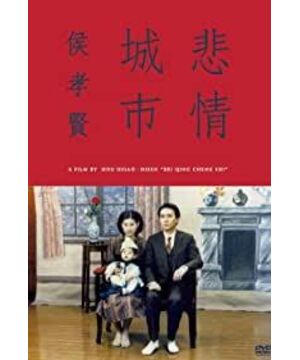Through the classic soundtrack of SENS, the film begins to narrate the life of the Lin family in the deeply immersive depth-of-field shots. The fixed picture makes people feel every change of the Lin family more from the sidelines. The newborn born in the light carries the parents. Looking forward to the new world, the youth fell in love amid political worries, and the white terror made the blood of this family flow in the sad city.
The film connects the history of a family with the history of Taiwan with conflicting interests one after another. Hou Hsiao-hsien gives the scenes of youth interaction a bright and transparent visual style, "I will always remember you, go flying, and I will follow. Just come, everyone is the same", which not only paved the way for the young people to die one by one, but also wrote the separation and encounter of the characters as light as a feather, with a cherry blossom-like temperament. Many mainland elements such as the fall of the Northeast, Marx, and socialist youth accurately express the identity of "Greater Chinese Culture", which is presented alternately with Japanese folk songs and Japanese poetry, which is enough to prove the sincere family and country feelings shared by the Lin family and an appropriate Japanese The degree of transformation can completely coexist, but because of their livelihood, their inevitable connection with Japan has become a reason for being suppressed.
"City of Sadness" is a retrial of 228 from a historical perspective. Young people are concerned about the country and the people, and they are patriotic youth with progressive consciousness. The radical violence carried out by the Nationalist government for localization caused the tragedy of the Lin family, and also gave rise to people's anxiety about identity. The memory's lifelong nightmare.
View more about A City of Sadness reviews











